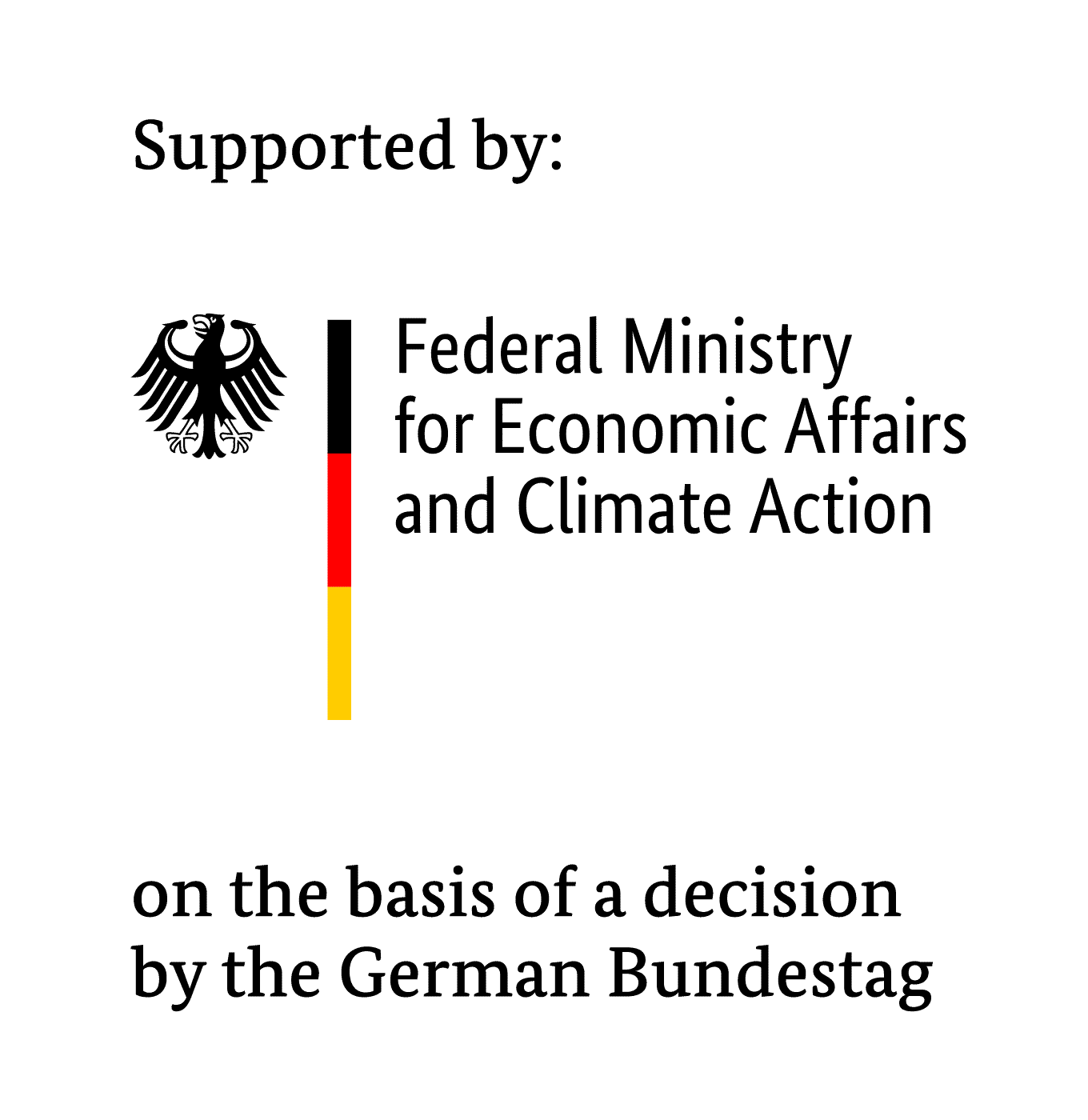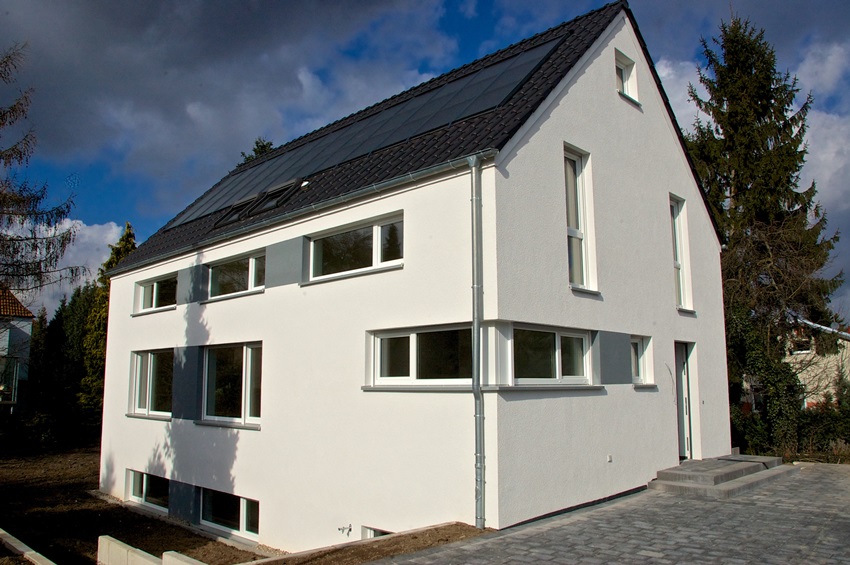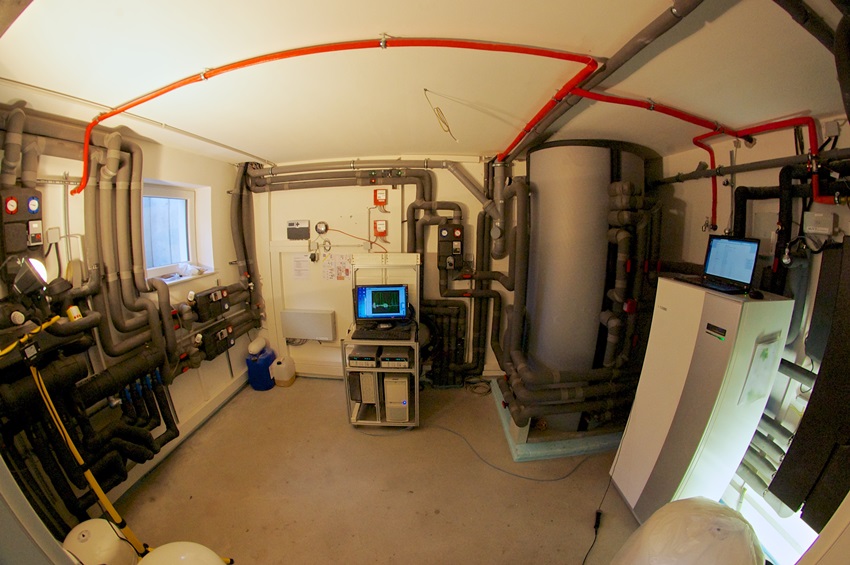
Development of a Concept for Temperature-optimized Heat Production in Solar Active Houses
The innovative manufacturer of residential buildings in solid construction, HELMA Eigenheimbau AG, develops in close collaboration with the Institut für Solarenergieforschung Hameln (ISFH) a new heat supply concept for solar active houses with solar fractions of more than 50%. Currently, solar houses are usually built with a central buffer storage (typical volumes in dwellings are between 5 and 10 m³), which is charged by the solar thermal system. Hence, the solar heat gained in summer can be partly stored for the heating period. The storage tank is installed within the heating zone of the building, so that its heat losses serve as inner gains during the heating period.
In the new system concept, which will be investigated in this project, the buffer storage is no longer the center of the system. Instead, the solar heat gains are distributed in a temperature-optimized way to feed different heat sinks. The following advantages are expected:
- Considerably smaller buffer storage volume required,
- Thermal activation of concrete floor elements is directly fed by the solar circuit. This leads to lower collector operation temperatures and thus to higher solar yields during winter time.
- During summer, the solar surplus heat is used to charge or regenerate a ground storage, which will be discharged using a heat pump during winter. Therefore, the concept works without the common wood combustion facility.
- Option: A PV-System covers the complete annual electricity demand of the heat pump and potentially also the whole household electricity demand.
The concept should decrease the today’s usual extra system costs of solar houses by about 25% while achieving at least the same solar fraction.
During the phase of the project, the concept is transferred into a status ready for implementation. With help of systems and components simulations the dimensioning of the major elements, as for example the thermally activated concrete elements has been accomplished as well as the development of useful control strategies, in close collaboration with the project partner RESOL – Elektronische Regelung GmbH. The most important aspect of the control algorithm is the demand-oriented distribution of the thermal energy gained from the collector connected with a performance evaluation basing on the current heat sink temperatures.
Derived from a positive energetic and economic evaluation it has been decided to implement the concept in an experimental building during the now running 2nd phase of the project. After completion in January 2015 the experimental house will be operated and measured under realistic conditions. In addition, further simulations will be made to optimize the concept. Moreover, the simulations will be used to develop and test technical variations. The test operation and measurement will continue until the beginning of 2017.
Downloads
The research project has been finished in September 2017. The final project reports written in German language can be downloaded in the following.
J. Steinweg; J. Glembin: Betrieb und messtechnische Bewertung eines neuartigen Sonnenhauskonzepts mit temperaturoptimierter Nutzung von Sonnenwärme anhand eines Experimentalgebäudes. Final project report, December 2017
J. Glembin; J. Steinweg; G. Rockendorf; N. Rudolph; J.Rust: Entwicklung eines Konzepts zur temperaturoptimierten Wärmebedarfsdeckung in Solaraktivhäusern. Final report, August 2015
Project partner


Duration
01.11.2011 – 31.03.2017
Final report
The final report of the project can be found here!
Funding
The projects SH-T-opt (FKZ 0325981A) and SH-T-Opt Exp (FKZ: 0325559) are funded by the Federal Ministry for Economic Affairs and Energy.




